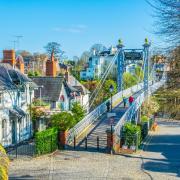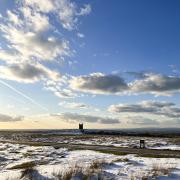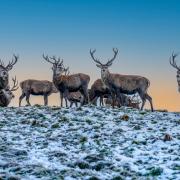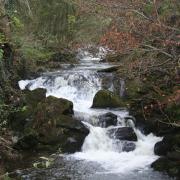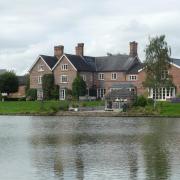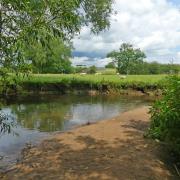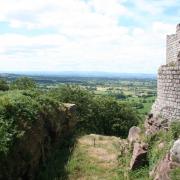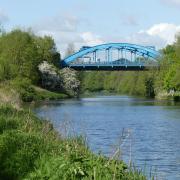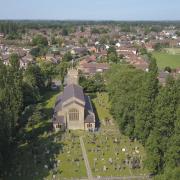Take your binoculars for a stroll around a birding hotspot near Sandbach .

Early autumn can seem a melancholy time, as summer departs. That is unless you’re a birdwatcher, for whom it really is a fruitful season.
Starting in July, the trickle of migrating waders returning from their northern breeding grounds swells to a flood in September and October.
Unlike the spring rush, when the adults vie to be first to bag the best breeding territories on the tundra, the autumn migration is more leisurely, birds sometimes lingering at suitable locations for several days. As well as returning adults, the autumn flocks contain juvenile birds making their first daunting journeys south, and these inexperienced and unaccompanied youngsters are more likely to stray off course.
Most birds follow the coasts, but a proportion journey overland and the lack of suitable stopovers can focus numbers at key wetlands. One such is the cluster of flashes east of Sandbach. Remarkably, you won’t find these lakes on early Ordnance Survey maps: they only started appearing in the 1930s after brine extraction caused subsidence. They range in salinity, but some of the saltier flashes host incongruous species such as sea aster, sea spurrey and various brine shrimps that are normally found only on coasts and estuaries.
Casual visitors are unlikely to encounter these halophile (salt-loving) specialists, as the flashes constitute a Special Site of Scientific Interest and close access is generally restricted. However, with a pair of binoculars you are more likely to see the special birds of the area, especially from a viewpoint over the productive lake known as the Salt Pan.
September rarities have included trans-Atlantic wanderers such as pectoral sandpiper, Franklin’s gull and Sabine’s gull. You’re of course unlikely to find one of these rarities, but you’ll very likely see commoner fare such as lapwings and grey herons and perhaps a migrating turnstone, dunlin or other wader. And if you should encounter a huddle of camera- and telescope-wielding enthusiasts, don’t be afraid to try the birder’s universal enquiry, a casual 'anything about?'

Our route begins in the pretty village of Warmingham and proceeds via fields and fishing lakes to the Trent and Mersey Canal.
A section alongside the railway includes a crossing of the River Wheelock. Beyond the Elton Flashes we rejoin the Wheelock for a pleasant half-mile in its meandering company back to Warmingham, passing my favourite of the flashes, the secretive Crabmill Flash. There is some walking along roads, though most of them are quiet country lanes.

1. From the Bear’s Paw, walk left, away from the church and river. Just before the entrance to Warmingham Grange on the left, turn right onto a signposted footpath along a track. A second gate leads into fields, with views over the Wheelock valley. Walk along the top of two fields (with a stile between) then join a track. After three more fields, turn left along a hedged track to Crabmill Lane.

2. Turn right and follow the road for a quarter of a mile. Shortly after a brick cottage on the left, turn left into Watch Lane, a no-through road. Beyond the farm at the end of the lane, join the grassy path ahead. This emerges between Watch Lane Flash and a series of fishing pools. Continue past the fishermen’s parking to the junction with Red Lane.
3. Turn left and follow the road past houses and round a right- and left-hand bend to a T-junction. Turn right and follow Plant Lane to the Trent and Mersey Canal.
4. Turn right onto the towpath and follow it for three-quarters of a mile to the next overbridge (Rookery Bridge, No 159). Pass under the low span and then under the West Coast Main Line a little further on.
5. Immediately beyond the railway bridge, turn right onto a footpath alongside the embankment, crossing the Wheelock after 700 yards. Beyond Fields Farm Flash on the left, you reach the end of a farm lane.
6. Leaving the railway, keep right at the entrance to Fields Farm. The lane leads between two small flashes to a larger road, where you turn right and after 200 yards pass under the railway. Ignoring a farm entrance on the immediate right, continue along the road for a similar distance looking out for a crossing footpath. Turn right up a few steps to a kissing gate and follow the field edge ahead. When the hedge swings right, continue ahead across the open field (to the right of a muddy flash) to another kissing gate onto a farm lane.

7. Turn left, with views over Elton Hall Flash on the right. At the end of the lane, turn right along the road. The large flash known as the Salt Pan can be overlooked from a viewing area near the old bridge over the Wheelock on the right. Continue along the road past Elton Hall and a few further houses to a T-junction. Turn left here along Hall Lane.
This vergeless road can be rather busy, so it comes as a relief when, after 250 yards, you can escape over a stile onto a footpath on the right, well before the road narrows to cross the river at the bottom of the valley.
8. Bear slightly left across the field to another stile, then follow the river past a shallow pond on the right to reach the end of Crabmill Flash. Beyond a gate, bear half-right, slightly away from the river, to a stile that may be concealed. Continue along the river, crossing a dry ditch, to a farm bridge near the end of the field. Cross the river and walk up a farm track to the Warmingham Road.

9. Turn right and follow the road back to the village. Note the fine 16th-century wing of Church House on the left, which earns it a Grade II* listing from Historic England. The church is largely Victorian, with an 18th-century tower, but there is a medieval cross base in the churchyard (with a newer sundial on top). Finally, cross the Wheelock again to return to the Bear’s Paw.
Compass Points
Area of walk: Warmingham, near Sandbach
Start point: Bear’s Paw, CW11 3QN
Distance: 6 miles
Time to allow: 3 hours
Maps: OS Explorer 267 Northwich & Delamere Forest + 257 Crewe & Nantwich
Refreshments: The Bear’s Paw, Warmingham, Sandbach CW11 3QN
thebearspaw.co.uk 01270 526317
Next month's walk: The woods above Frodsham

The Bear’s Paw
The Bear’s Paw is a large Victorian building at the heart of Warmingham village, built in the red-brick and half-timber style so beloved of Cheshire estates in that era. The authors of the Cheshire volume of Pevsner’s Buildings of England series describe it as 'very cheerfully done'.
Nobody was cheerful in June 2008, though: just weeks before the completion of a lengthy refurbishment, an electrical fault caused a fire that reduced the building to little more than a shell. What you see today is the result of a costly rebuild that delayed the reopening for a further year.
It’s now a popular food pub owned by the Cheshire-based Nelson Hotels group, which also includes the Pheasant at Burwardsley, the Fishpool at Delamere and the Grosvenor Hotel and Spa at Pulford.
The menu changes daily, with an emphasis on local produce, and includes a range of salads, sandwiches and grills. A range of local hand-pulled real ales is on offer at the bar. If you’re planning on popping in (and if you’re not, it would be discourteous to use the car park without permission), don’t forget your plastic – at present, only card payments are accepted.
There is a pleasant garden at the front, with tables shaded by parasols. Dogs are welcome; in fact, when I asked whether the pub was dog-friendly, general manager Mike Roberts corrected me with a smile, telling me they prefer the more inclusive pet-friendly, since past visitors have brought along some surprising companion animals, among them llamas, lizards and even an owl.
They might balk at an actual bear, though…






